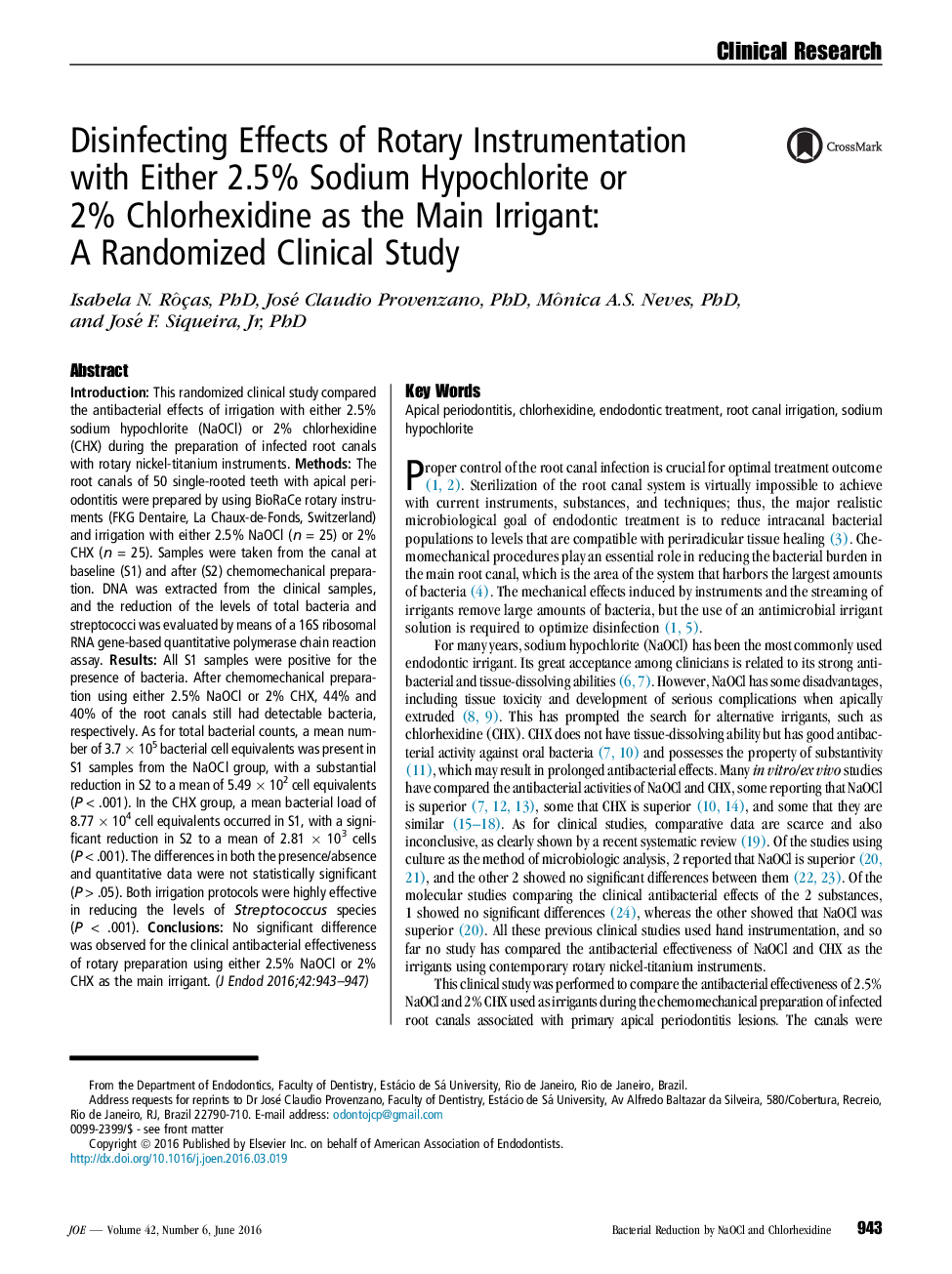| Article ID | Journal | Published Year | Pages | File Type |
|---|---|---|---|---|
| 3146515 | Journal of Endodontics | 2016 | 5 Pages |
IntroductionThis randomized clinical study compared the antibacterial effects of irrigation with either 2.5% sodium hypochlorite (NaOCl) or 2% chlorhexidine (CHX) during the preparation of infected root canals with rotary nickel-titanium instruments.MethodsThe root canals of 50 single-rooted teeth with apical periodontitis were prepared by using BioRaCe rotary instruments (FKG Dentaire, La Chaux-de-Fonds, Switzerland) and irrigation with either 2.5% NaOCl (n = 25) or 2% CHX (n = 25). Samples were taken from the canal at baseline (S1) and after (S2) chemomechanical preparation. DNA was extracted from the clinical samples, and the reduction of the levels of total bacteria and streptococci was evaluated by means of a 16S ribosomal RNA gene-based quantitative polymerase chain reaction assay.ResultsAll S1 samples were positive for the presence of bacteria. After chemomechanical preparation using either 2.5% NaOCl or 2% CHX, 44% and 40% of the root canals still had detectable bacteria, respectively. As for total bacterial counts, a mean number of 3.7 × 105 bacterial cell equivalents was present in S1 samples from the NaOCl group, with a substantial reduction in S2 to a mean of 5.49 × 102 cell equivalents (P < .001). In the CHX group, a mean bacterial load of 8.77 × 104 cell equivalents occurred in S1, with a significant reduction in S2 to a mean of 2.81 × 103 cells (P < .001). The differences in both the presence/absence and quantitative data were not statistically significant (P > .05). Both irrigation protocols were highly effective in reducing the levels of Streptococcus species (P < .001).ConclusionsNo significant difference was observed for the clinical antibacterial effectiveness of rotary preparation using either 2.5% NaOCl or 2% CHX as the main irrigant.
